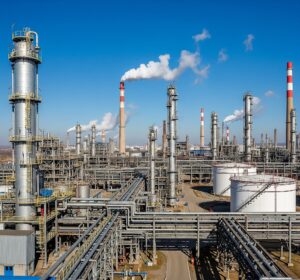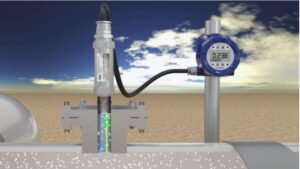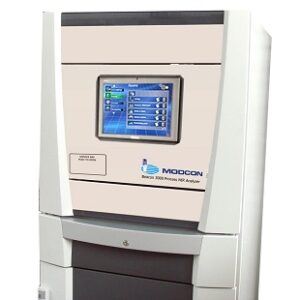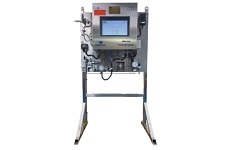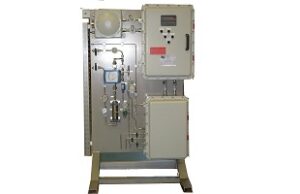Chemical Industry
MEG Production
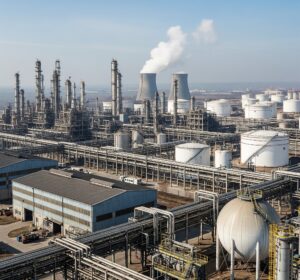 Monoethylene Glycol (MEG) is a foundational chemical compound, playing a critical role in the chemical industry. Its widespread applications, from the production of polyester fibers and resins (for textiles, packaging, and plastic bottles) to antifreeze, de-icing fluids, and natural gas processing, underscore its indispensable nature in modern manufacturing and infrastructure. The global demand for MEG continues to grow, making efficient and high-quality production paramount.
Monoethylene Glycol (MEG) is a foundational chemical compound, playing a critical role in the chemical industry. Its widespread applications, from the production of polyester fibers and resins (for textiles, packaging, and plastic bottles) to antifreeze, de-icing fluids, and natural gas processing, underscore its indispensable nature in modern manufacturing and infrastructure. The global demand for MEG continues to grow, making efficient and high-quality production paramount.
However, the production and handling of MEG present unique challenges, particularly concerning purity and safety. One of the most critical aspects requiring precise control is the analysis of oxygen (O2) throughout the MEG production lifecycle.
The Critical Need for O2 Analysis in MEG Production:
Oxygen, even in trace amounts, can significantly impact MEG quality, lead to undesirable by-product formation, and pose substantial safety risks.
- Product Degradation and Impurity Formation:
- MEG is susceptible to oxidation, especially during exposure to air, elevated temperatures, or in the presence of certain catalysts. This oxidation process can lead to the formation of aldehydes (such as glycol aldehyde, glyoxal, formaldehyde, and acetaldehyde) and corresponding acids.
- These impurities can significantly compromise the quality of the MEG, particularly for sensitive applications like fiber-grade production, where even trace contaminants can interfere with downstream polymerization processes and catalyst performance.
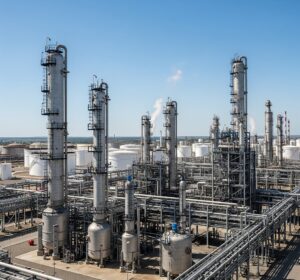 Maintaining ultra-low oxygen levels is crucial to prevent such degradation and ensure the final product meets stringent quality specifications.
Maintaining ultra-low oxygen levels is crucial to prevent such degradation and ensure the final product meets stringent quality specifications.
- Corrosion in Production and Transportation Systems:
- Dissolved oxygen in MEG, even at low concentrations (e.g., above 10-20 ppb), is a significant contributor to corrosion in pipelines and processing equipment.
- Oxygen can cause various forms of corrosion, including general corrosion, pitting, crevice corrosion, and stress corrosion cracking, particularly in carbon steel and even corrosion-resistant alloys (CRAs) used in subsea systems for hydrate inhibition.
- This not only leads to material degradation and costly repairs but can also introduce iron oxide scales into the MEG, further impacting purity and operational efficiency.
- Effective de-aeration of MEG, often supplemented by nitrogen blanketing of storage vessels and sometimes oxygen scavengers, is vital to mitigate these corrosion risks.
- Safety Hazards:
- While MEG itself is not highly flammable, its precursor, ethylene oxide (EO), is highly reactive and has a wide explosion range when mixed with air. Although the production process aims to minimize EO accumulation, the presence of oxygen in high-temperature reactors can lead to undesirable exothermic reactions between ethylene and EO, increasing the risk of runaway reactions and safety incidents.
- Controlling oxygen levels, particularly in the ethylene epoxidation step where oxygen is an oxidant, is critical for safe operation and preventing hazardous conditions.
The Solution: Advanced Process Analyzers for O2 Monitoring
To address these challenges, advanced process analyzers are indispensable for continuous, real-time oxygen monitoring throughout the MEG production and handling process. These analyzers provide the precision and reliability required to ensure product quality, prevent corrosion, and maintain safe operating conditions.
Key applications for O2 analyzers in MEG production include:
- Feedstock Monitoring: Ensuring minimal oxygen in ethylene and other incoming raw materials.
- Reactor Control: Precisely monitoring and controlling oxygen levels within the ethylene oxide and MEG reactors to optimize reaction kinetics, prevent unwanted side reactions, and enhance safety.
- MEG Regeneration and Reclamation: Verifying the effectiveness of de-aeration processes in recycled MEG streams to prevent corrosion in pipelines and subsea equipment.
- Storage and Transportation: Monitoring and controlling oxygen in storage tanks and during cargo transfer to prevent product degradation and maintain purity. This often involves ensuring nitrogen blanketing is effective.
- Quality Control: Final product oxygen analysis to meet strict industry specifications for various MEG grades.
